An Overview of Current Tagless Technologies
Originally published in Specialist Printing Worldwide (www.specialistprinting.com)
Over the past few years, the so-called Tagless Apparel – t-shirts, jeans, underwear and other garments that do not have sewn-in care labels – are becoming the new standard in apparel manufacturing. Not only this trend is popular with the consumers (who are spared of the much annoying tags and the urge to cut them out), but it also brings in a magnitude of cost savings to the producers. The following article describes and compares the most popular tagless techniques: heat transfer labeling, screen printing and tagless pad printing.
Heat Transfer
Heat transfer (also known as thermal transfer) was the first technology that some of the major garment manufacturers deployed. This method involves outsourcing the production of label rolls and in-house application of the rolls to the fabric using heat presses. The heat transfer label roll is made of polyethylene, paper or polyester carrier, plastisol or, lately, water-based inks and adhesives activated by heat and pressure, ranging within 260-400°F (127-204°C) and 8-30 PSI (0.6-2kg/cm²). The applied heat transfer label can look as a solid rubbery area with somewhat jutting text and images, or it can contain only the text/graphic elements with a “halo” from the adhesive material, which may be well-visible or almost non-existent. The latter, more advanced type of the heat transfer label is usually almost unnoticeable on touch while the garment is still new and unwashed.
There has been much change in the heat transfer label industry, following some hiccups on the tagless market. Most notably, in 2008-2009 in the USA, heat transfer labels have reportedly caused skin allergies in babies and a small number of adults. Soon after this, US legislators toughened the rules concerning heavy metals and phthalates in children’s articles as well as inks used in consumer products (CPSIA’08, California Proposition 65) – and the heat transfer companies had to reformulate their plastisol inks. Some of the companies came up with water-based inks.
Though “human-friendlier,” the new types of labels tend to be less resistant to washing, especially to repeated industrial type washing at high temperatures. Normally, a label withstands the milder “home” type laundering at the maximum temperatures of 110-140°F (45-60°C). In general, after a limited number of washings, the parts of the label start peeling off. (Many consumers seem to agree that heat transfer labels would not last adequately to the life of the garment. And when the labels disappear, letter by letter, the brand name and care facts vanish with them.)
Another issue for large-scale apparel manufacturers lies in label application speed: the “dwelling” time (when the label is pressed into the fabric) that is required to achieve the minimal industrially acceptable levels of durability is about 6-12 seconds for each label. Average cycle time is 400 labels an hour. Depending on the setup, the application time of heat transfers may be not shorter than that of sewn-in labels.
Screen Printing
Not surprisingly, garment manufacturers and decorators continued exploring the methods for tagless marking. It was probably due to small custom decorating shops, which wanted to do short-run on-demand production and already owned screen printing machines, that screen printing of the care tags was tried out. The obvious benefits were that the shops did not have to purchase several thousand labels (on average, the cost of a minimal order starts at $1000) or wait for them to be manufactured.
Screen printing turned out to be capable of producing high quality, detailed tags that were durable as well as customizable on-demand. However, this method did not offer much advantage in production speed because the garments had to be turned inside out for printing, then given time for the ink to dry (which sometimes requires the use of drying ovens), and then turned back to the right side for packing. In case of multi-color tags, production time grows as each color had to be dried before the application of the other one.
As for the larger screen printing companies that normally own high-end automatic screen printing systems designed for the elaborate large decorations of the fronts of the garments – they found that screen printing of the tags can often be an inefficient tie-up for their expensive machinery.
As of now, screen printing is being used, but does not seem to have a future in large-volume tagless production.
Pad Printing
Pad printing technology came next and – after some tweaking of the process, adjusting consumable materials and developing specialty printing plates and fixtures – became the method of choice for a growing pool of apparel manufacturers and decorators, both those who tag one dozen and hundreds of thousands garments a day.
Unlike screen printing, which has been used for textile imaging for centuries, pad printing of textile or leather had been incidental until the last couple of years. Pad printing was originally developed and used for the precise imaging of uneven and relatively rigid surfaces, such as golf and stress balls, watch faces, dinnerware, doll faces, instrumentation boards, various promotional products etc. Therefore, the concept of pad printing care tags at first appeared somewhat amusing. Yet pad printing turned out very well suited for the application.
The basic mechanism of pad printing is as follows: the ink cup deposits ink into the image etched into the printing plate (cliché); the silicone printing pad picks up the ink and presses it onto the part; the part is removed and the next one positioned for printing by a conveyor or a human operator.
With most textiles, printed tags are touch-dry and garments are ready for handling (packing) within 1-3 seconds after printing; no separate drying process is required. The pad printing machines are capable of repeating the cycle at the speed of up to 2100 prints per hour. As a result, the average production speed for the tagless printing industry is limited only by the operator’s speed, and averages at 1000 tags per hour for one-color images of approximately 2″ in diameter. For the multi-color tag – which can be completed within a print cycle of a single machine – the speed can be up to 900 tags per hour, depending on the type of textile and image. These production speeds set pad printing apart from all other current tagless techniques.
The other major advantage is the cost of a printed tag. The amount of ink required to print a tag is minuscule; even after factoring in other consumables such as pads and etched clichés, the printed tag costs an order of magnitude less than a heat transfer label, just about $0.003. Compare that to $0.02-0.09 cost of the heat transfer label (see Table 1 for more details).
See The Benefits of a Tag Printing Machine for Clothes
When it comes to capital expenses, pad printing equipment cost is comparable to or less than that of heat transfer label equipment. And the cost of utilities with pad printing is less because the machines do not generate heat and require much less electricity, both for the operation and for air conditioning of the facilities. All of these cost factors amount to a huge advantage, especially for high-volume producers. In fact, most converts to tagless pad printing – for instance, Cupid Intimates (women’s intimate apparel manufacturer based in Nicaragua) – cited significant cost reduction as the decisive factor for switching over from heat transfer.
As mentioned above, one of the benefits of screen printing is that the graphics can be adjusted on the spot. With pad printing, on-demand artwork change is even more efficient because of the modern digital plate-making technology. Computer-to-plate comprises laser etching of specially coated plates (clichés) directly from digital files, without the loss of resolution and with complete cliché repeatability. The ability to easily make clichés in-house eliminates long lead times often associated with labels as well as the bulk of perishable inventory. Tagless pad printing makes short runs cost-effective and long runs quick to deploy.
In addition, pad printing matches the other prominent benefit of screen printing – the detailed and crisp image, especially when high quality pad printing inks – those with small and uniform pigment particles – are used. There are such ink lines available on the market. As are inks that address consumer health concerns by being non-toxic and non-irritant to the skin.
The durability of pad printed tags exceeds that of heat transfer labels, mostly due to pad printing ink penetrating the fabric, not “sitting on” it. The wash tests conducted by the Govmark Inc., an independent US laboratory, show that the test prints are virtually intact after 50 industrial grade washings at 160°F (70°C) with bleach. Most heat transfer labels don’t stretch; the stretchable type labels have reduced durability. By contrast, the printed tags both stretch and shrink with the fabric, which makes them unnoticeable for the consumer even after the garment is worn and washed – and preserves brand identity. Furthermore, pad printed tags can be applied to heat-sensitive materials without the risk of leaving heat marks on the fabric.
On the down-side, pad printing is new for the garment makers. As with the adoption of any new technology, there is a learning curve. Pad printing process has many variables such as the ink mix, the depth of the plate, the pad pressure. When these variables are properly adjusted to the conditions – fabric density and elasticity, image characteristics, air humidity and temperature – excellent results are in store. When they are off, the quality will suffer. This is why for a successful deployment it is crucial to get quality training and technical support as a part of the transition program.
Additional Reading: What is tagless label printing?
The World is Tagless
Technological solutions become viable and attractive, or the opposite, only in particular socio-economical conditions. With the current global landscape, mass production is happening where labor is cheap and in abundant supply. Medium and large apparel companies are running factories in Central and South America, India, China. They are looking for a tagless technology to complement their resources and optimize their processes – and tagless pad printing is the logical choice. In fact, it’s a triple win: the manufacturers cut costs and production time while enhancing product quality and brand longevity; the developing countries get better working and living conditions; and the consumer becomes care-tag-free.
About Inkcups Now Corporation
Inkcups is the leading American supplier of equipment and consumables for tagless pad printing on t-shirts, uniforms, underwear, sportswear and other garments. We have assisted hundreds of apparel manufacturers and decorators, ranging from small shops to multinational corporations, based in the USA as well as abroad, in setting up tagless pad printing production.
Inkcups provides turnkey tagless solution that includes robust high-speed semiautomatic pad printers, full line of supplies, digital cliché-making equipment and services as well as technical support in English and Spanish. Inkcups’ experienced industry professionals are based in the USA, Canada, Honduras, Dominican Republic, Mexico, Columbia and Argentina.
Inkcups’ Sapphire® SB series ink for tagless printing is a line of premium textile inks that pass 50 industrial washings, do not contain heavy metals and restricted phthalates (CPSIA and California Proposition 65 compliant) and are NAMSA certified to cause zero skin irritation.
As the leading inventor and promoter of the digital plate-making for the pad printing industry, Inkcups has unique expertise in laser plate-making equipment, setup and operation, together with the most comprehensive line of specially developed laser engravable plates available on the American market.
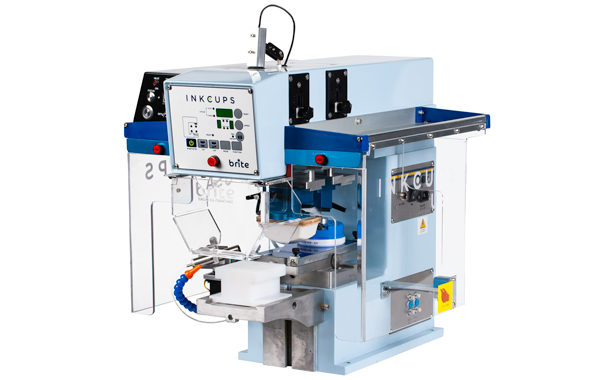 Tagless Printers
Tagless Printers Cylindrical Inkjet Printers
Cylindrical Inkjet Printers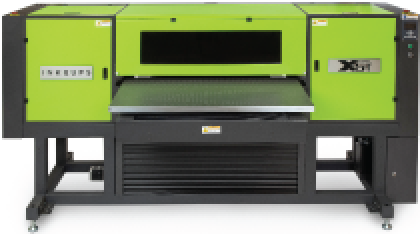 UV Flatbed Printers
UV Flatbed Printers Pad Printing Machines
Pad Printing Machines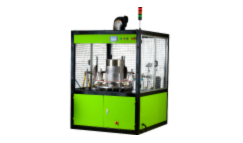 Pretreatment Systems
Pretreatment Systems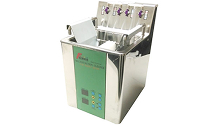 Inkjet Printing Auxiliary
Inkjet Printing Auxiliary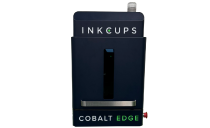 Laser Plate-Makers
Laser Plate-Makers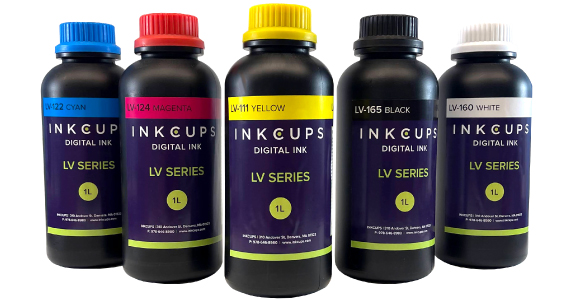 Inkjet Printing Supplies
Inkjet Printing Supplies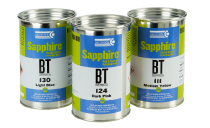 Pad Printing Supplies
Pad Printing Supplies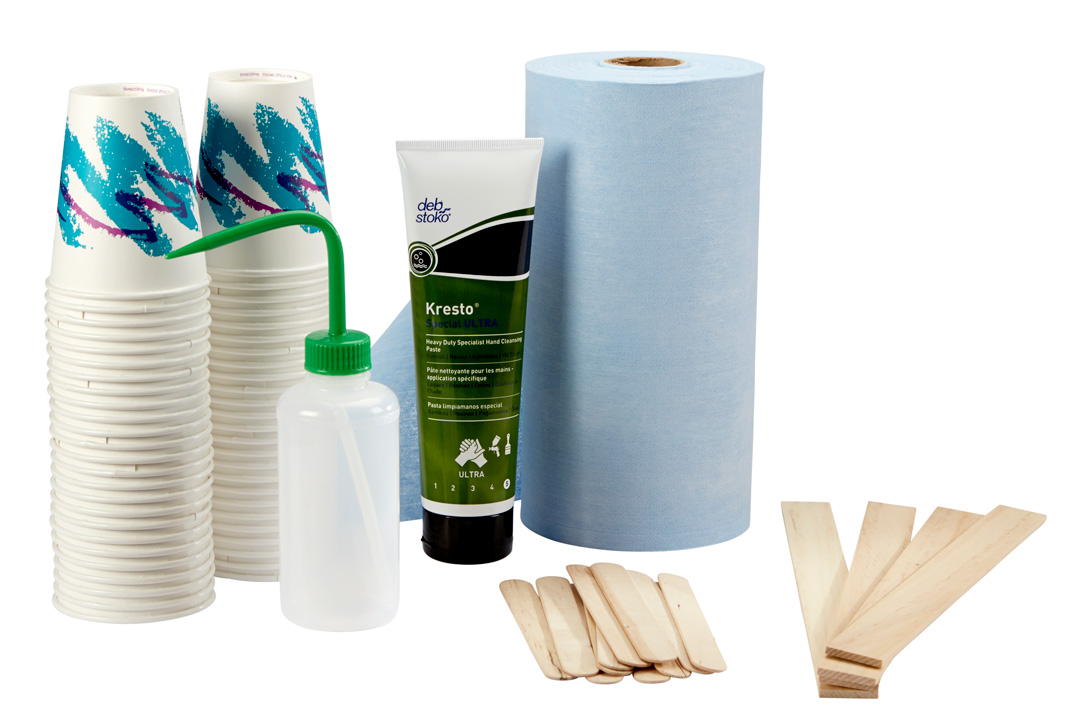 Tagless Supplies (tagless.inkcups.com)
Tagless Supplies (tagless.inkcups.com)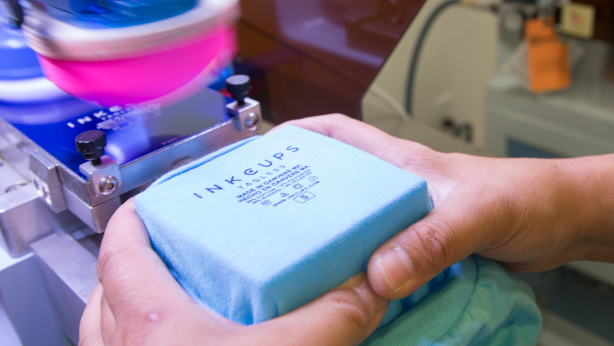
Add Your Comment